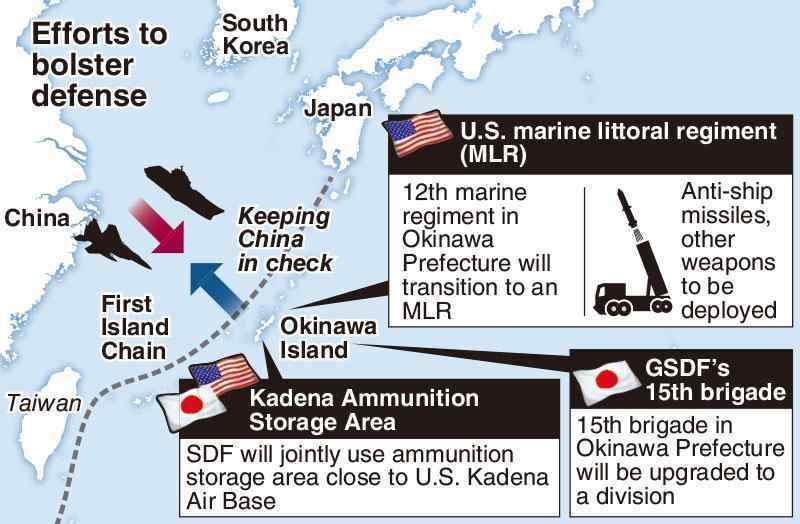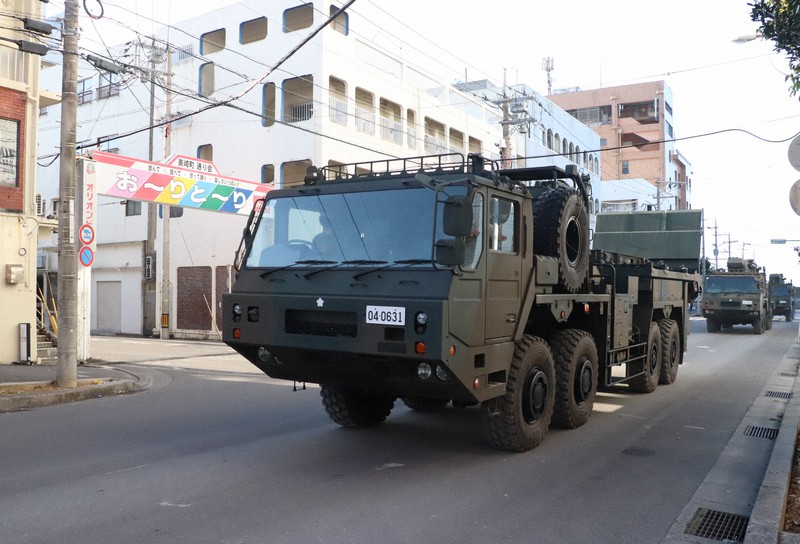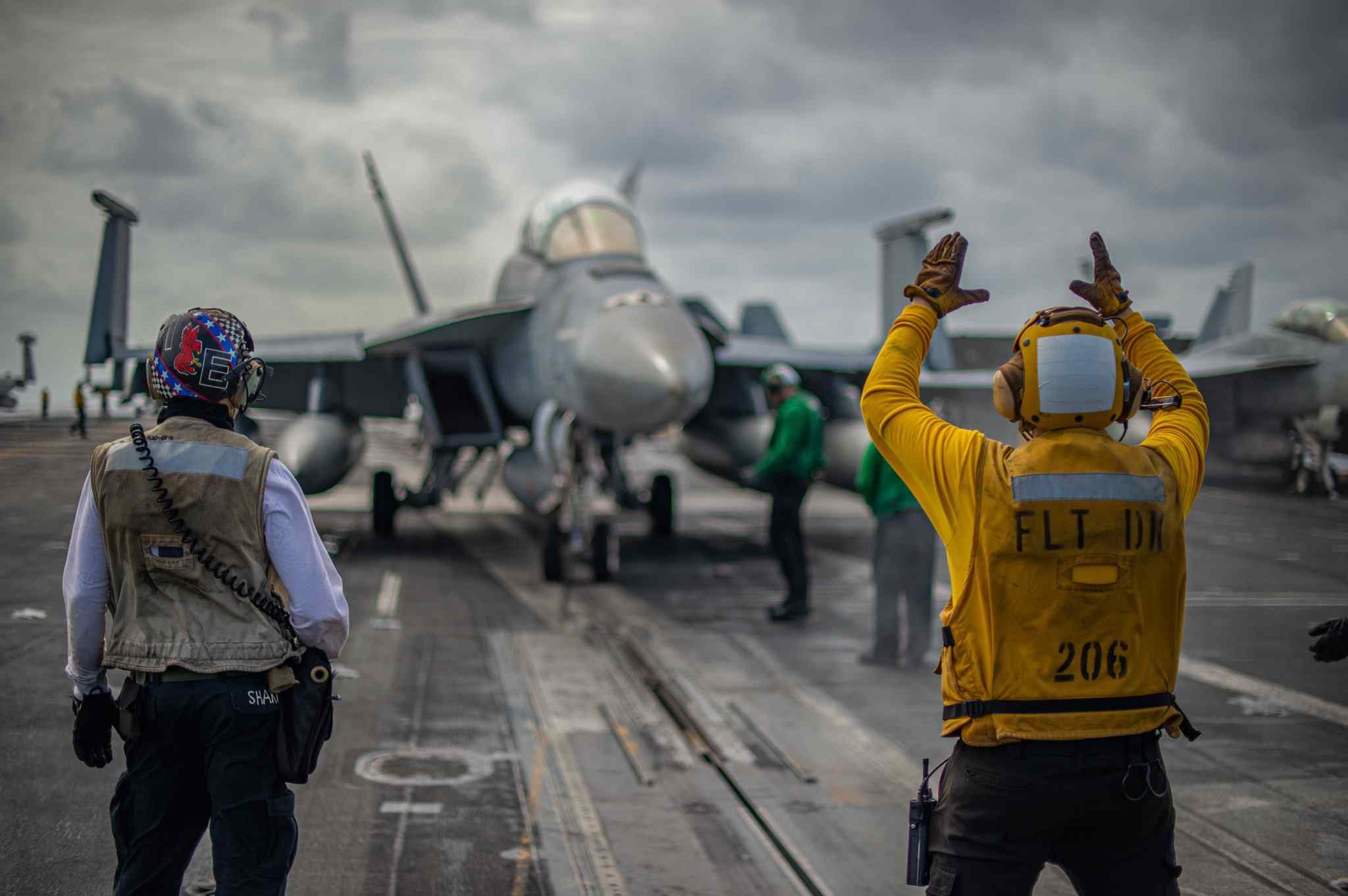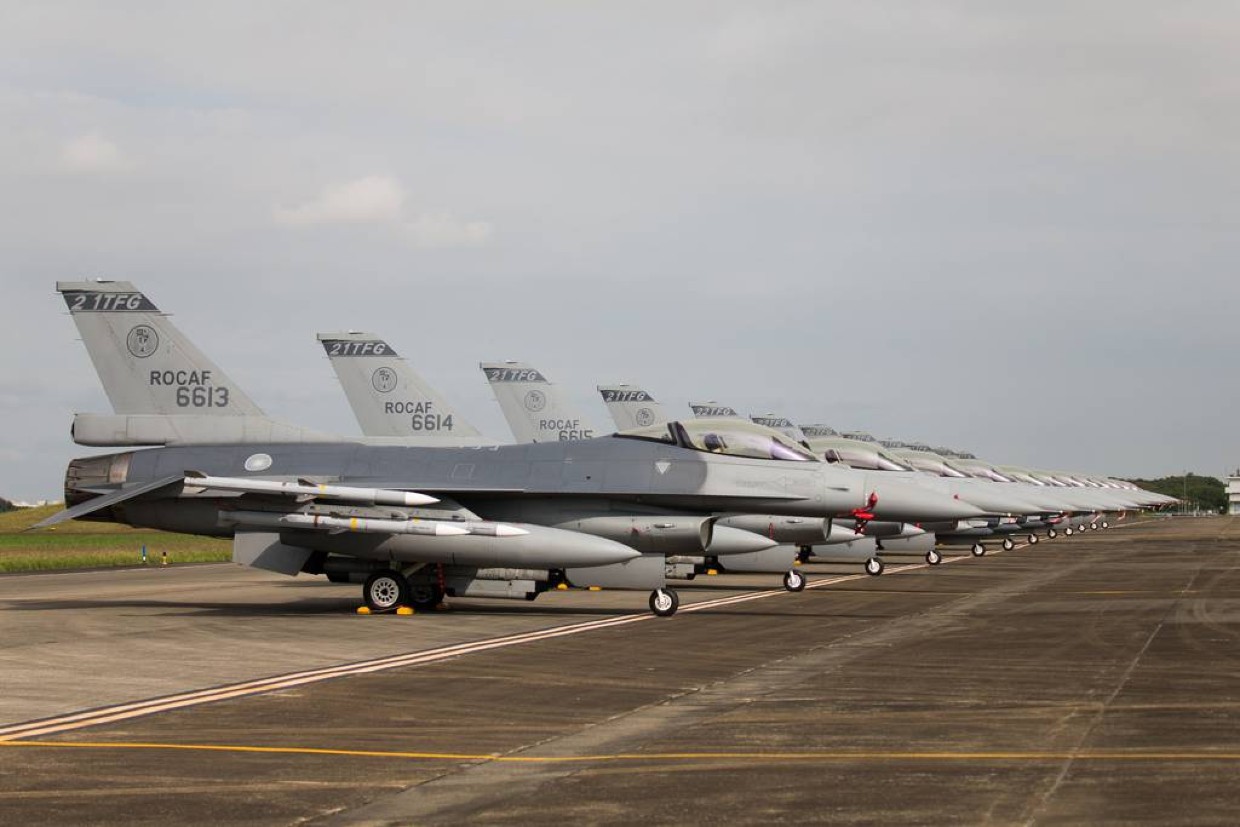Taiwan is likely to host US ammunition storage facilities on the island to help Washington address its logistical constraints in the Western Pacific against China, according to its defense minister Chiu Kuo-cheng.
If the talks between Washington and Taipei materialize, it will make Taiwan the third state along the First Island Chain, which includes Japan and the Philippines, to position ordnance for use in case war breaks out with China.
Japan has already opened its fourth such base in its southernmost Nansei (or Ryukyu islands), which includes Okinawa, extending southwest towards Taiwan. As for the Philippines, the US is trying to modify the Enhanced Defense Cooperation Agreement (EDCA) signed with Manila also to base ammunition facilities on the four islands.
This is because the access to Philippine military bases that EDCA allows for “joint training, pre-positioning of equipment and building of facilities such as runways, fuel storage, and military housing is not a permanent presence,” according to Reuters.
According to Asia Sentinel, these could be two or three islands in its Cagayan or Isabela provinces in the north – close to Taiwan’s southern flank.
Retired Rear Admiral Rommel Ong of the Philippine Navy was quoted in the report saying that while ammunition depots are the most likely facility, “the specific EDCA sites have not been firmed up from the Philippine side.” “The type of facility in the EDCA site obviously will have to be the subject of another discussion between both parties,” Ong said.
This is part of a broader effort by the US and its allies to overturn their perennial logistical disadvantages in resupplying their fighting units and ships with fuel, food, and firepower in the western Pacific.
While it is unclear how the forward dispersed basing of ammunition might operate, the thinking appears to be eliminating the costly and vulnerable naval reinforcement operations that might come under a Chinese attack.
Dispersed Ammunition Bases – Spread Out But Not Invulnerable
However, by that logic, the ammunition bases are likely to come under attack, and statements from these countries indicate that their purpose is more oriented towards deterring a Chinese strike.
Nevertheless, the consistent efforts are directed towards enabling the US and its allies to fight China inside its formidable anti-access/area-denial (A2/AD) bubble. China’s A2/AD doctrine envisages extremely long-range anti-ship and land attack missiles to keep the US Navy at bay without allowing it to get close to Chinese shores.

Talking about the ammunition depots, Chiu called it a “contingency stockpile” of US munitions on the island, which according to Asia Sentinel, would automatically elevate Taiwan to the status equivalent of a ‘major non-NATO ally.’
The EurAsian Times had touched upon logistical issues dogging the US and its allies against China in several previous analyses. The programs in Taiwan, Japan, and the Philippines are proposed for more widely dispersing ammunition facilities. This prevents them from being destroyed in a single strike and complicates Chinese targeting priorities.
Chiu’s revelation comes in the backdrop of recent war games by the US-based Center for Strategic International Studies (CSIS) concluding how the US would quickly run out of the vital Long Range Anti-Ship Missiles (LRASM) while trying to stop a Chinese invasion of Taiwan.
The LRASM is the anti-ship variant of the AGM-158 Joint Air-to-Surface Standoff Missile (JASSM). CSIS predicts that barely 450 LRASMs will be available, as against 3,650 JASSMs-ER (Extended Range) in 2026, when a war over Taiwan is expected to break out.
Japan’s New Bases & Missiles
In Japan, meanwhile, activating the newly established base at the southwestern island of Ishigaki in the Okinawa Prefecture on March 16 is the fourth such military facility. The other three are on Kagoshima Prefecture’s Amami-Oshima island and the islands of Miyako and Yonaguni in Okinawa Prefecture.
Yonaguni, the last Japanese island part of its Ryukyus/Nansei chain, is just over 60 miles off Taiwan’s northwest and threatens the northern flank of a People’s Liberation Army Navy (PLAN) naval armada.

Japan has also backed up its military with missile development and procurement. It has already ordered air-launched missiles like the Norwegian Joint Strike Missile (JSM), 1000 km-range US Joint Air-to-Surface Standoff Missile (JASSM), and the Long Range Anti-Ship Missile (LRASM). These are part of the 2019 Medium Term Defense Program (MTDP).
It is also upgrading the Range of its Type-12 surface-to-ship missile to 1,500 kilometers and aims to deploy it by 2026. Five hundred US Tomahawks are planned to be fielded by 2027 in anticipation of a delay in developing the Type-12 missile upgrade project. The most ambitious project is the indigenous 3,000 km-range hypersonic glide vehicle project, aimed at deployment by the mid-2030s.
Chinese defense observers pointed out how the US’ newly formed Marine Littoral Regiments (MLR) might use the Ryukyus to Taiwan’s north and the Philippine islands (Itbayat, Cagayan, or Isabela) to Taiwan’s south to target Chinese warships.
Grant Newsham, a former US Marine, had explained how such basing immediately around China and Taiwan does not deter Beijing from attacking, but still advocated developing them to keep challenging China and hone “warfighting skills.” “(The MLR bases) can be outflanked or leapfrogged or penetrated by brute force (and) are just one part of a more complex defense problem,” Newsham wrote in an article in Asia Times.
While Newsham also pointed to benefits from greater interaction between the US Marines and Japanese Self-Defense Forces, it must be noted that the only active MLR is located in Okinawa, where such joint training can be undertaken.
The Japanese military entirely operates the four in Nansei/Ryukyu islands. Japan is still unwilling to antagonize China overtly by basing US troops close to China or its claimed territory, like Taiwan.

Short War Vs. Long War
Basing US troops or ammunition deports so close to Taiwan might force China to act soon and draw Japan early into the conflict. While taking a hardline on China (and Russia and North Korea, too), its leadership has still upheld “deterrence” as the primary goal behind its military infrastructure and technological build-up.
As for the ammunition bases, going by Newsham’s reasoning, they can keep supplying US forces only up to a few days more, and it is hard to imagine that their capacities will be worth several months’ worth of ordnance.
At some point, the US would have to press its supply and refueling tankers into service, which is a target for China. Even worse, the dispersed ammunition depots might eventually be detected and destroyed in a Chinese missile strike.
Collin Koh, a Research Fellow at the Institute of Defense and Strategic Studies in Singapore, seems to agree with the risk of pre-positioning ordnance, albeit in dispersed locations but argues that it is all about the speed with which such units can enter the operational area.
“The forces can deploy more quickly in-theater and enter combat operations more rapidly with the ammo stockpiles ready, and of course, the stockpiles, depending on how large they are, would be vital in sustaining the forces in-theater in times of a high-intensity conflict,” Koh was quoted in the article on Asia Sentinel.
Commander Ashok Bijalwan, a retired Indian Navy submariner, agreed that forward ordnance depots are vulnerable. “But they are also meant to reduce the initial response time to an attack or to initiate a preemptive strike to take the enemy by surprise,” he told EurAsian Times.
The absence of potential adversaries from the warzone or a strategic void in the operational area is often exploited by militaries to rapidly achieve their geographic aims and set facts on the ground.

This makes displacing the attacker even more difficult for the responders. Any workable military solution would only be severe and escalatory for the region, which countries are usually deterred from. Bijalwan disagreed that forward ammunition depots eliminate the need for resupply missions.
The vulnerability of the forward ammunition stores can be addressed by infrastructure like hardened shelters, which protect against “damage to a great degree,” according to Bijalwan. Koh and Bijalwan suggest a dynamic where any Chinese military move will be detected and countered early, preventing the People’s Liberation Army (PLA) from achieving many of its tactical goals.
Thus, it appears what might decide the outcome of a war over Taiwan is its duration, with a short, sharp, and intense flare-up primarily benefiting the US and its allies and a prolonged one helping China. The vulnerability of the forward ammunition stores can be addressed by infrastructure like hardened shelters, which protect against “damage to a great degree,” according to Bijalwan.
Koh and Bijalwan suggest a dynamic where any Chinese military move will be detected and countered early, preventing the People’s Liberation Army (PLA) from achieving many of its tactical goals.
Thus, it appears what might decide the outcome of a war over Taiwan is its duration, with a short, sharp, and intense flare-up largely benefiting the US and its allies and a prolonged one helping China.
- The author can be reached at satamp@gmail.com
- Follow EurAsian Times on Google News




